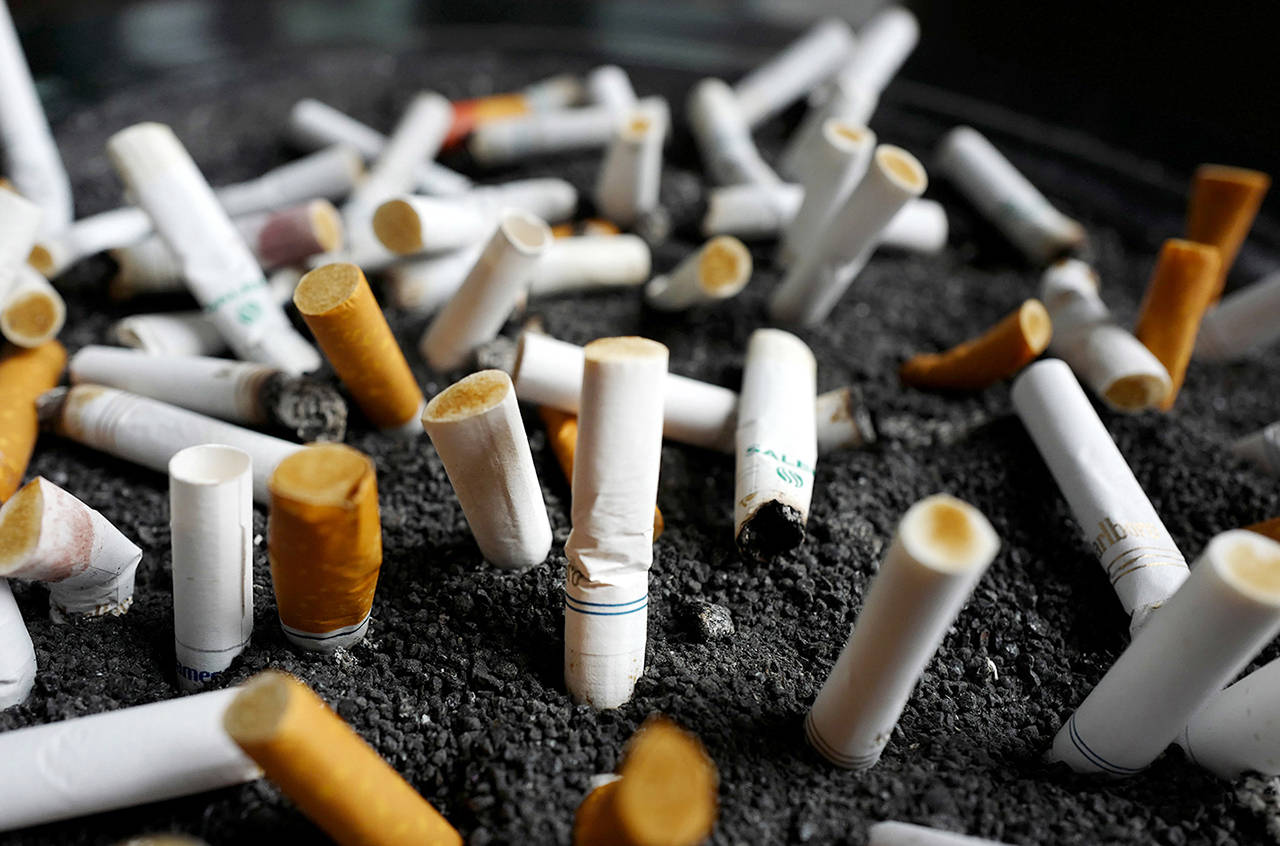By The Herald Editorial Board
The Food and Drug Administration may have figured out how to help adults kick their cigarette habit and keep youths from even starting smoking: take most of the nicotine out of cigarettes.
The FDA announced Thursday that it wants to significantly reduce the allowable level of nicotine in cigarettes — and perhaps other “combustible” tobacco products, such as cigars, pipe and “roll your own” tobacco — largely removing the drug that makes those products so addictive.
The FDA is expected to publish a notice in the Federal Register today announcing a rule-making procedure that would gather information and public comment on the proposal as it decides whether and how to implement the regulations. Congress granted the FDA regulatory authority over cigarettes in 2009 and expanded that to all tobacco products in 2016.
A typical cigarette delivers about 1.1 to 1.7 milligrams of nicotine. The agency is citing research that shows the benefits of reducing that to 0.3 to 0.5 milligrams per cigarette. That reduction, the FDA said, could help about 5 million adult smokers quit within a year and keep another 33 million from becoming regular smokers by the year 2100, National Public Radio reported Thursday.
Smoking already is on the decline, dropping from 21 percent of U.S. adults in 2005 to 15.5 percent in 2016. Reducing the nicotine in cigarettes could reduce that to as low as 1.4 percent by the end of the century and save an estimated 8 million lives.
Cigarette smoking causes an estimated 480,000 deaths each year in the United States, more than opioid and other illegal drug use, alcohol, homicide, suicide, AIDS and auto accidents — combined.
Smoking also costs the nation some $300 billion a year in health care spending and lost productivity, FDA Commissioner Scott Gottlieb, told The Washington Post.
And while smoking among youths also has declined, the 2014 Surgeon General’s report found that 5.6 million youths between the ages of birth to 17 are projected to die prematurely from smoking-related diseases.
Making cigarettes minimally addictive or nonaddictive could be most effective in keeping youths from acquiring a tobacco habit. The Centers for Disease Control and Prevention estimates that 30 percent of youths who experiment, those smoking less than 25 cigarettes during their lifetime, go on to become established smokers. Other research indicates that an addiction to tobacco can develop after smoking less than 100 cigarettes, the FDA reported.
Reducing the levels of nicotine also would help current smokers quit and quit for good.
More than half of adult smokers make an attempt to quit each year, the FDA report said, and most fail because of nicotine’s addictive qualities. Even among those who quit for at least a year, 30 percent to 40 percent go back to smoking, and half relapse within seven years.
There are questions the FDA will need to answer through its rule-making procedure, including whether to impose the reduced nicotine level all at once or step down the allowable level over time; and whether to limit nicotine only in cigarettes or extend the limits to all smokable tobacco.
And it will have to consider how to prevent attempts to get around the nicotine reduction, either through black market sales or by people simply smoking more to get the higher dose of nicotine, which would be even more unhealthy for smokers.
The FDA also should continue its close watch over e-cigarettes. While many say vaping has value in helping smokers quit, research is mounting that it, too, can result in health problems from the chemicals that are inhaled. If e-cigarettes remain as the last remaining legal source of nicotine, expect many more smokers to turn to those devices to continue their addiction.
There will be those, smokers and nonsmokers alike, who will see the FDA’s proposal as more “nanny state” regulation, but we suspect there are also plenty of smokers — especially those who have repeatedly tried to quit and failed — who will appreciate the move, as well as many parents who don’t want their kids to start smoking in the first place.
Talk to us
> Give us your news tips.
> Send us a letter to the editor.
> More Herald contact information.

























